How To Upsell: 10 Upselling Techniques For Double Your Revenue
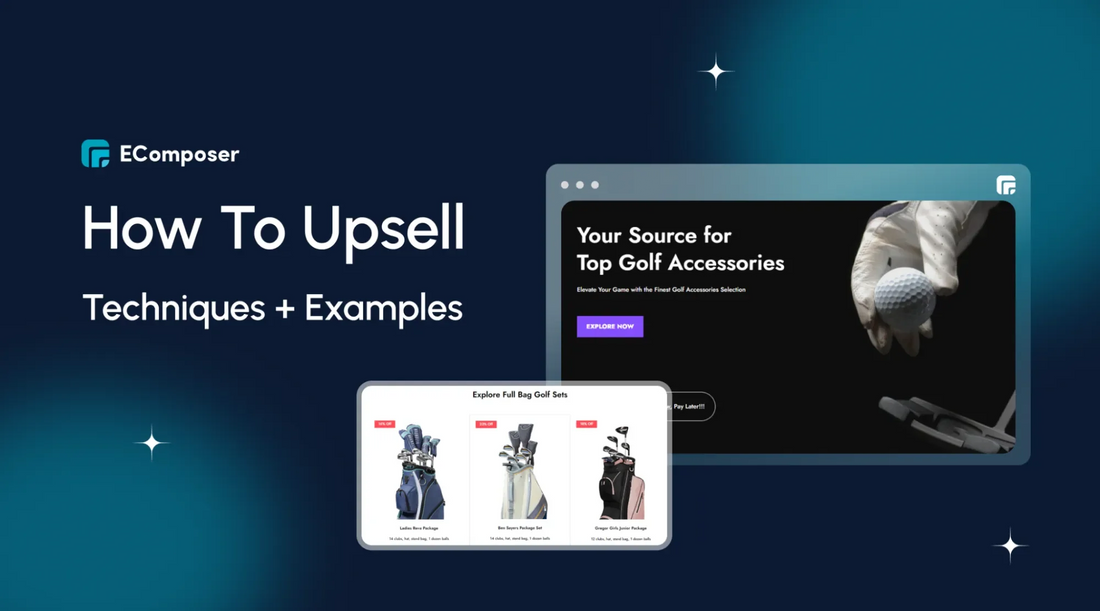
Table Of Contents
72% of sales professionals who engage in upselling indicate that upselling contributes 1-30% of their company's total revenue. In this guide, we'll learn how upselling techniques can skyrocket your revenue by maximizing the value of every customer interaction.
What is Upselling and its importance in sales growth?

Upselling is a sales technique in which a seller persuades a customer to purchase a higher-end or more expensive version of the product or service they are interested in or to add additional items or upgrades. The goal of upselling is to increase the value of the sale, thereby maximizing revenue and often enhancing the customer's overall experience.
Upselling plays a crucial role in driving sales growth for businesses:
Revenue Maximization
Businesses can increase the average order value by persuading customers to upgrade to higher-value products or add complementary items to their purchases, maximizing revenue from each transaction.
Enhance Customer Value
Upselling allows businesses to offer customers additional value by presenting them with products or services that better meet their needs or preferences. This not only increases customer satisfaction but also strengthens customer loyalty and retention.
Competitive Advantage
Effective upselling strategies enable businesses to differentiate themselves from competitors by providing personalized recommendations and tailored solutions, ultimately positioning them as trusted advisors in customers' eyes.
Improved Profit Margins
Upselling higher-margin products or services can improve profit margins, as the incremental revenue generated often comes with lower associated costs than acquiring new customers.
Long-Term Growth Potential
Consistently upselling to existing customers fosters long-term relationships and opens up future sales and cross-selling opportunities. Satisfied customers are more likely to become repeat buyers and advocates for the brand, contributing to sustained growth over time.
[ecom-global-block]ecom-shopify-trial-block[/ecom-global-block]
Identify Upselling Opportunities

Identifying upselling opportunities requires a strategic approach tailored to your specific business and customer base. Here are some effective methods to help you pinpoint upselling opportunities.
- Comprehensive Product Knowledge: Ensure your sales team is well-versed in all your products or services' features, benefits, and use cases. By understanding the full range of offerings, they can identify opportunities to upsell based on customer needs.
- Customer Needs Analysis: Engage customers in conversations to understand their requirements, preferences, and pain points. By actively listening to their needs, you can identify opportunities to upsell additional products or services that address specific challenges or enhance their experience.
- Past Purchase Behavior: Analyze historical sales data to identify patterns and trends among your customers. Look for opportunities to upsell based on previous purchasing habits, such as recommending complementary products or upgrades that align with their past preferences.
- Personalization and Customization: Leverage customer data and insights to personalize your upselling efforts. Tailor recommendations based on past purchase history, demographics, and browsing behavior to offer relevant and timely upsell suggestions.
- Upselling Triggers: Implement triggers or prompts within your sales process to identify potential upselling opportunities. For example, if a customer is considering a certain product, your sales team can proactively suggest additional features or accessories that complement their purchase.
- Bundle Offers and Packages: Create bundled offers or package deals that incentivize customers to upgrade or add-on related products or services. By presenting bundled options at the point of sale, you can increase the perceived value and encourage upselling.
- Customer Feedback and Surveys: Gather customer feedback to understand their satisfaction levels and uncover unmet needs. Use surveys or feedback forms to solicit input on potential areas for improvement or additional offerings that customers would find valuable.
- Seasonal or Promotional Opportunities: Take advantage of seasonal events, holidays, or promotional periods to highlight upselling opportunities. Offer special discounts, promotions, or limited-time offers on complementary products or upgrades to entice customers to make additional purchases.
Employing these strategies and staying attuned to customer needs and preferences can help you effectively identify upselling opportunities and maximize revenue growth for your business.
10 Upselling Techniques to Maximize Your Sales
1. Product Bundling

(image source: EComposer’s Template)
Bundle complementary products or services into packages offered at a slightly discounted price compared to purchasing each item individually. This technique encourages customers to buy additional items they may not have considered otherwise.
- Identify products or services that naturally complement each other and create bundled packages.
- Prominently display these bundles on your website, in-store, or during checkout to encourage upsells.
2. Tiered Pricing

(image source: EComposer Pricing)
Offer multiple tiers of products or services, each with increasing levels of features or benefits at different price points. Highlight the value of higher-tier options to encourage customers to upgrade.
- Clearly outline the features and benefits of each tier, making it easy for customers to understand the value proposition.
- Use visual aids such as comparison charts to illustrate the differences between tiers.
3. Limited-Time Offers

(image source: EComposer’s Template)
Create a sense of urgency by offering time-limited promotions or discounts on upsell items. This motivates customers to make a decision quickly and capitalize on the opportunity.
- Use phrases like "limited-time offer" or "while supplies last" to convey urgency.
- Clearly communicate the deadline for the offer and use countdown timers or deadlines to reinforce the sense of urgency.
4. Personalized Recommendations
Leverage customer data and purchase history to tailor upsell suggestions to each individual's preferences and past behavior. This increases the likelihood of a successful upsell.
- Implement recommendation algorithms that analyze customer data to generate personalized upsell suggestions.
- Use dynamic content to display relevant upsell offers based on the customer's browsing or purchase history.
5. Upsell Add-Ons and Upgrades

(image source: EComposer’s Template)
Highlight additional features, accessories, or upgrades that enhance the functionality or performance of the customer's original purchase and emphasize the added value they provide.
- Showcase upsell add-ons, or upgrades should be prominently featured on product pages, with clear descriptions of how they enhance the customer's experience.
- Offer bundled discounts for purchasing the main product along with relevant add-ons or upgrades.
6. Upselling During Checkout
Prompt customers with relevant upsell offers at the point of purchase when they are already in a buying mindset and more receptive to additional suggestions.
- Implement upsell prompts or pop-ups during checkout, highlighting relevant add-ons or upgrades based on the customer's current purchase.
- Keep these prompts unobtrusive and easy to dismiss to avoid disrupting the checkout flow.
7. Loyalty Programs
Reward loyal customers with exclusive upsell opportunities, such as access to premium products or services, special discounts, or bonus rewards for upgrading their purchases.
- Implement a tiered loyalty program that offers increasingly valuable rewards as customers reach higher loyalty levels.
- Provide personalized upsell offers to loyal customers as a token of appreciation for their continued support.
8. Social Proof and Reviews
Showcase positive reviews, testimonials, or social proof for upselling items to build trust and confidence in the customer's decision to upgrade or add to their purchase.
- Collect and display featured customer reviews section and testimonials for prominently upsell items on product pages or during checkout.
- Encourage satisfied customers to share their experiences on social media or review platforms.
9. Upselling Through Education

Educate customers about the benefits and advantages of upselling items, demonstrating how they can solve specific problems or meet specific needs more effectively than their original purchase alone.
- Create informative content, such as product guides, tutorials, or case studies, that highlights the unique value proposition of upsell items.
- Incorporate this content into your website, email campaigns, or sales presentations to educate customers and encourage upsells.
10. Free Shipping Threshold

Setting a free shipping threshold serves as a powerful incentive for customers to increase their order value to qualify for free shipping. By strategically positioning the threshold slightly above the average order value, you can encourage customers to add more items to their carts to reach the threshold, ultimately driving upsells and increasing overall sales revenue.
- Analyzing the average order value to determine an appropriate threshold.
- Prominently display the threshold amount on your website with a free shipping bar to encourage customers to add more items to the carts.
- Strategically promoting upsell items or product bundles that help customers reach the free shipping threshold.
- Leverage targeted marketing campaigns or email notifications to remind customers of the remaining amount needed to qualify for free shipping, further incentivizing upsells and driving increased sales revenue.
[ecom-global-block]ecom-shopify-commerce-coach-block[/ecom-global-block]
3 Upsell Apps for your online stores
1. EComposer

EComposer is an all-in-one Shopify App. With its intuitive drag-and-drop editor, you can create stunning and highly converting pages effortlessly. Whether it's a landing page, product showcase, or blog post, EComposer has you covered. Save time and costs with built-in extensions for upselling and boosting sales. Plus, with speed-up tools and optimized codes, this app ensures your store's performance stays top-notch. Experience 24/7 live chat support for hassle-free assistance anytime.
Highlight features
- Offers a versatile array of features and integrated add-ons, providing a comprehensive platform for executing and overseeing upselling strategies such as product bundles, related products, and more.
- Versatile in creating any type of page on different screen sizes
- Intuitive drag-and-drop page builder with a user-friendly interface, no coding needed, adhering to Shopify standards.
- Diverse design library featuring various page layouts, section templates, and many elements to enhance your pages.
- Advanced functionalities, including Page Analytics, Global Blocks, AI Content Generator, and Lazy Load to optimize performance.
Pricing & Plans
- Free Plan
- Standard Plan: $19/month
- Pro Plan: $39/ month
- Premium Plan: $99/month
2. Reconvert Post Purchase Upsell

ReConvert Post Purchase Upsell elevates your revenue with versatile upselling tools, including Checkout Upsell, One-Click Upsell, and Post Purchase Upsell. Instantly enhance your conversion rates with conversion-focused post-purchase upsell funnels and checkout blocks. Unlock the power of one-page checkout upsell and thank you page features to boost rebuys, increase margins, and achieve new sales milestones.
Highlight features
- Implement checkout and post-purchase upsell funnels to encourage increased spending by shoppers.
- Enhance average order value with immediate post-checkout blocks and one-click upsell offers.
- Revitalize your thank-you page by incorporating surveys, birthday collections, and product upsells.
- Simplify the creation and management of your checkout upsell strategy using a drag-and-drop editor.
- Utilize Selleasy segmentation to easily trigger bundle upsells, cross-sells, and one-click upsells.
Pricing & Plans
- Free
- Upsell Basic: $4.99/month
- Upsell Premium: $7.99/month
- Upsell Premium Pro: $14.99/month
3. Upsell & Cross Sell - Selleasy

Selleasy Upsell & Cross Sell elevates your average order value with one-click upsells and cross-sells. Bundle frequently bought together items and related product addons effortlessly. Selleasy's high-converting pre-purchase and post-purchase upsell offers encourage customers to bundle products, enhancing your AOV. Choose manual or automatic upsell creation and enjoy multi-language and multi-currency support. Its unobtrusive widgets offer various upsell styles, with free setup assistance available.
Highlight features
- Present product upsells bundles reminiscent of Amazon's "frequently bought together" feature.
- Offer cross-sell product add-ons directly on the product page, displayed as a list, grid, or alternative format.
- Initiate a cart upsell funnel or add-on pop-up tailored to items in the cart and cart page.
- Showcase post-purchase upsells with one-click checkout upsell on a dedicated page.
Pricing & Plans
- Tier I: Free
- Tier II: $8.99/month
- Tier III: $16.99 /month
Read more here: 9+ Best Shopify Upsell Apps to Sell Smarter
Implementing Upselling in Different Sectors
In today's competitive market, mastering the art of upselling is essential across various sectors. Whether in retail, online businesses, or service industries, strategic upselling techniques can significantly impact revenue and customer satisfaction. Let's explore tailored approaches for each sector to implement upselling tactics and drive growth effectively.
Retail Upselling
In retail, upselling techniques are crucial for maximizing revenue and enhancing the customer shopping experience.
- Train staff to identify opportunities to upsell by understanding customer needs.
- Offer product bundles or upgrades during checkout to increase average order value.
- Use signage and displays strategically to promote complementary products.
Online Businesses
For online businesses, implementing upselling strategies requires leveraging digital tools and data-driven approaches.
- Utilize personalized product recommendations based on browsing history and purchase behavior.
- Implement dynamic pricing strategies to offer discounts on upsell items.
- Incorporate upsell prompts during the checkout process to encourage additional purchases.
Service Industries
In service industries, upselling drives revenue growth and enhances customer satisfaction.
- Train customer service representatives to upsell additional services or upgrades.
- Offer package deals or subscription options to incentivize upsells.
- Use customer data to identify opportunities for upselling based on past service usage or preferences.
Common Mistakes in Upselling

Pushy Sales Tactics
Using aggressive or pushy sales tactics can turn customers off and damage the relationship. Instead of focusing on the customer's needs and preferences, pushy upselling can lead to frustration and a negative perception of the brand.
Solution:
Focus on consultative selling by understanding the customer's needs and preferences. Offer relevant upsell suggestions that genuinely add value to the customer's purchase experience.
Lack of Product Knowledge
Upselling effectively requires a deep understanding of the products or services being offered. Having sufficient knowledge about the offerings can result in effective upselling attempts and missed opportunities to add value for the customer.
Solution:
Invest in comprehensive product training for sales and customer service teams. Ensure staff are well-equipped to recommend relevant upsell options based on customer needs confidently.
Ignoring Customer Needs
One of the most significant mistakes in upselling is ignoring the customer's needs and preferences. Instead of offering relevant upgrades or add-ons that enhance the customer's experience, upselling unrelated or unnecessary items can lead to dissatisfaction and lost sales.
Solution:
Take the time to listen to the customer and understand their requirements before proposing upsell offers. Tailor upsell suggestions to address specific pain points or enhance the customer's original purchase.
Timing Issues
Timing is crucial in upselling. Failing to identify the right moment to present upsell offers can result in missed opportunities or annoyance. Understanding the customer's journey and presenting upsell suggestions at appropriate moments during the buying process is essential.
Solution:
Implement upselling prompts at strategic points in the customer journey, such as during product selection or at checkout. Use data analytics to identify the optimal timing for presenting upsell offers.
Overwhelming Customers
Bombarding customers with too many upsell offers or options can overwhelm them and lead to decision paralysis. It's essential to strike a balance and present upsell suggestions clearly and concisely, focusing on the most relevant options.
Solution:
Present upsell options clearly and concisely, focusing on a few relevant suggestions rather than overwhelming the customer with too many choices. Provide additional information or recommendations upon request.
Neglecting Post-Sales Support
Upselling should continue once the customer makes a purchase. Neglecting post-sales support or failing to follow up with additional upsell opportunities can result in missed revenue and lost opportunities to deepen the customer relationship.
Solution:
Follow up with customers after purchase to offer ongoing support and additional upsell opportunities. Implement post-sales communication channels such as email or live chat to keep customers engaged and informed.
Lack of Personalization
Generic upsell offers that need to consider the customer's preferences or past behavior are less likely to resonate. Personalizing upsell suggestions based on customer data and insights can significantly increase the chances of success.
Solution:
Leverage customer data and insights to personalize upsell recommendations based on past behavior, preferences, and purchase history. Use dynamic content and recommendation algorithms to tailor offers to individual customers.
Not Monitoring Results
Failing to track and monitor the results of upselling efforts makes it challenging to assess effectiveness and make necessary adjustments. It's essential to regularly analyze upsell performance metrics and refine strategies based on insights gathered.
Solution:
Track and analyze upselling performance metrics such as conversion rates, average order value, and customer feedback regularly. Use the insights gathered to refine upselling strategies and improve results over time.
Best Practices to Implement Upselling Effectively

Understand Customer Needs
- Conduct customer surveys or interviews to gather insights into their preferences and pain points.
- Analyze purchase history and browsing behavior to identify patterns and trends.
- Train sales and customer service teams to actively listen to customer inquiries and identify upselling opportunities based on their needs.
Offer Relevant Recommendations
- Utilize recommendation algorithms to suggest upsell options based on the customer's purchase history or browsing behavior.
- Use dynamic content on product pages to showcase related items or complementary products.
- Implement personalized email campaigns with upsell offers tailored to customers' interests and preferences.
Use Data Analytics
- Implement tracking tools to monitor customer behavior and measure the effectiveness of upselling efforts.
- Analyze upselling performance metrics such as conversion rates, average order value, and upsell acceptance rates.
- Use A/B testing to experiment with different upselling strategies and optimize results based on data-driven insights.
Timing is Key
- Present upsell offers at strategic points in the customer journey, such as after adding an item to the cart or during the checkout process.
- Use exit-intent pop-ups to capture the attention of customers who are about to leave the website without making a purchase.
- Send follow-up emails with upsell offers after a customer has completed a purchase to encourage repeat business.
Provide Clear Value Propositions
- Clearly communicate the benefits and value of upsell options to customers through persuasive product descriptions and compelling visuals.
- Use social proof, such as customer reviews and testimonials, to reinforce the value of upsell items.
- Offer exclusive discounts or limited-time promotions to incentivize customers to take advantage of upsell offers.
Make it Easy to Say Yes
- Streamline the upselling process by providing one-click upsell buttons or pre-selected options that make it easy for customers to accept the offer.
- Offer bundled deals or package discounts that provide additional value and encourage customers to upgrade their purchase.
- Provide a seamless checkout experience with minimal friction to minimize barriers to accepting upsell offers.
Train Staff Effectively
- Provide sales and customer service teams comprehensive training on upselling techniques, product knowledge, and objection handling.
- Conduct role-playing exercises to practice upselling scenarios and improve staff confidence and effectiveness.
- Provide ongoing feedback and coaching to reinforce best practices and continually improve upselling skills.
Monitor and Optimize Performance
- Regularly review upselling performance metrics and track progress towards upselling goals.
- Identify trends and patterns in upselling data to uncover areas for improvement and optimization.
- Experiment with different upselling strategies and tactics and iterate based on results to refine and improve upselling effectiveness continually.
Case Studies: Successful Upselling Strategies
1. Drink Olipop

Drink Olipop, an online store, implemented a successful upselling strategy by offering free shipping for orders over $50. This encouraged larger orders and enhanced the overall customer experience.
- Incentivizing Larger Orders: Free shipping for orders exceeding $50 encouraged customers to add more items to their carts to qualify, boosting average order value.
- Value Perception: Customers perceived added value in reaching the free shipping threshold, influencing them to explore additional products.
- Psychological Impact: The free shipping threshold leveraged loss aversion psychology, motivating customers to avoid shipping costs by spending more.
Implementing the $50 free shipping threshold resulted in higher average order values, increased customer satisfaction, and improved brand loyalty for Drink Olipop.
2. Magic Spoon

Magic Spoon, an online store specializing in keto-friendly products with high protein content, implemented a successful upselling strategy by offering a bundle of 6 packs at a discounted price. This bundle offer encourages customers to purchase in bulk while saving money per unit.
- Value Proposition: The bundle offer provided added value, allowing customers to save money per unit by purchasing in bulk.
- Upsell Incentive: The discounted bundle price incentivized customers to increase their order size, leading to higher average order values.
- Pricing Psychology: Customers perceived the bundle offer as a better deal, influencing their purchasing decisions.
- Product Experience: The bundle allowed customers to experience various products while enjoying cost savings, enhancing satisfaction and brand loyalty.
3. Apple
Apple, one of the most popular and influential technology brands globally, employs various upselling strategies to maximize revenue and enhance customer satisfaction. Renowned for its innovative products that are highly anticipated even before the official release, Apple continuously seeks to offer customers added value and premium experiences. These strategies leverage a combination of product bundling and premium features to encourage customers to purchase higher-priced products or add-ons.
Product Bundling

Apple offers product bundles such as the "Apple One" subscription, which combines multiple services like iCloud storage, Apple Music, Apple TV+, and Apple Arcade into a single package. Additionally, Apple bundles accessories such as chargers and AirPods with iPhone purchases. This bundling strategy encourages customers to subscribe to multiple services at once or purchase accessories alongside their main product, increasing their overall spending with Apple.
Premium Features

Apple incorporates premium features and add-ons into its products to upsell customers to higher-priced models or configurations. For instance, customers can upgrade their iPhone to a model with more storage capacity or opt for premium features like the ProMotion display on the iPad Pro. These upselling tactics encourage customers to spend more for enhanced functionality or performance.
Trade-In Programs

Apple offers trade-in programs where customers can exchange their old devices for credit to purchase a new one. This encourages customers to upgrade to the latest Apple products while providing them with a convenient and cost-effective way to trade in their old devices. By incentivizing upgrades, Apple increases sales and customer retention.
4. Pizza Hut

During the checkout process, Pizza Hut employs a strategic upselling tactic by offering customers additional options, such as pizza upsize, a cheese-stuffed crust, or extra toppings. This strategy aims to increase the average order value by encouraging customers to customize their orders with premium add-ons.
- Customization: Pizza Hut offers options like cheese-stuffed crust, allowing customers to personalize orders to their tastes, enhancing satisfaction, and catering to individual preferences for a more enjoyable dining experience.
- Value-Added: Premium add-ons such as cheese-stuffed crust provide customers with additional value, elevating the perceived quality of their meal and justifying the extra cost for a more satisfying dining experience.
- Upselling: Pizza Hut strategically prompts customers to consider additional options like cheese-stuffed crust or extra toppings during checkout, increasing the overall value of their order and maximizing sales potential.
5. Shopify

Shopify, a leading e-commerce platform, implements upselling strategies to increase sales and enhance merchant success. It provides subscription packages encouraging merchants to invest in additional services or functionalities.
Shopify offers merchants various subscription plans, each offering different features and capabilities. Merchants are often encouraged to upgrade to higher-tier plans to unlock advanced features such as abandoned cart recovery, gift card support, and advanced reporting tools. Shopify promotes these feature upgrades to optimize store performance and increase sales.
Final Thoughts
In conclusion, mastering the art of upselling is essential for any business looking to maximize revenue and enhance customer satisfaction. By implementing the upselling techniques outlined in this blog, you can encourage customers to upgrade their purchases, explore complementary products, and ultimately increase their order value. Unlock the full potential of upselling and achieving their revenue goals.
FAQs - Upselling techniques

1. What is upselling, and why is it essential for businesses?
Answer: Upselling encourages customers to purchase a more expensive or upgraded version of a product or service they are already considering. It is crucial for businesses because it helps increase the average order value, maximize revenue, and enhance customer satisfaction.
2. What is cross-selling, and how does it differ from upselling?
Answer: Cross-selling involves suggesting related or complementary products to customers based on their current purchases or interests. The main difference between upselling and cross-selling is that upselling encourages customers to purchase a more expensive version of the same product they are considering, while cross-selling suggests additional products that complement the primary purchase.
3. How can I distinguish between upselling and cross-selling opportunities?
Answer: Upselling opportunities arise when customers are considering a specific product or service, and businesses can suggest a higher-priced or upgraded version of that same product. Cross-selling opportunities occur when customers have made a purchase decision, and businesses can recommend additional products that complement or enhance their primary purchase.
4. How can I identify upselling opportunities with my customers?
Answer: Businesses can identify upselling opportunities by analyzing customer behavior and purchase history, understanding customer needs and preferences, leveraging data and analytics tools, and training staff to recognize and capitalize on upselling opportunities during customer interactions.
5. Are there any potential challenges or pitfalls to be aware of when implementing upselling techniques?
Answer: While upselling can be highly effective, businesses should be mindful of potential challenges such as customer resistance, pricing sensitivity, overloading customers with options, and ensuring that upselling efforts align with the overall customer experience and brand values.
6. How can I measure the success of my upselling efforts?
Answer: Businesses can measure the success of their upselling efforts by tracking metrics such as average order value, conversion rates, revenue generated from upsells, customer feedback, and satisfaction scores and analyzing the impact of upselling on overall business performance and profitability.
7. What are some best practices for implementing upselling techniques in my business?
Answer: Best practices for implementing upselling techniques include understanding customer needs and preferences, providing relevant and personalized recommendations, making suggestions at the right time and in the proper context, offering value-added products or services, and continuously refining upselling strategies based on customer feedback and performance metrics.
8. What are some successful businesses' most popular upselling techniques?
Answer: Some popular upselling techniques include offering product bundles, suggesting premium or upgraded versions of products, providing add-ons or accessories, offering complementary services, and leveraging limited-time offers or promotions.
9. How can I determine which upselling techniques are most effective for my business?
Answer: Determining the most effective upselling techniques for your business involves analyzing customer behavior and preferences, testing different upselling strategies, tracking the performance of upselling efforts, and soliciting customer feedback to identify which techniques resonate best with them.
10. Are there specific industries or types of businesses that benefit most from certain upselling techniques?
Answer: While upselling techniques can be effective across various industries, certain techniques may be more suitable for specific types of businesses or customer demographics. For example, offering product bundles may be more effective for retailers selling complementary products, while suggesting premium versions of services may be more relevant for subscription-based businesses.
11. How can I leverage upselling techniques to increase customer satisfaction and loyalty?
Answer: Businesses can use upselling techniques to increase sales and improve customer satisfaction and loyalty by providing customers with relevant and personalized recommendations, offering value-added products or services, and enhancing the overall shopping experience.








![[16+] Key Factors To Creating High-Converting Landing Pages](http://ecomposer.io/cdn/shop/articles/image36_d556409c-ae96-447f-ae87-cad185353947.webp?v=1756325102&width=533)
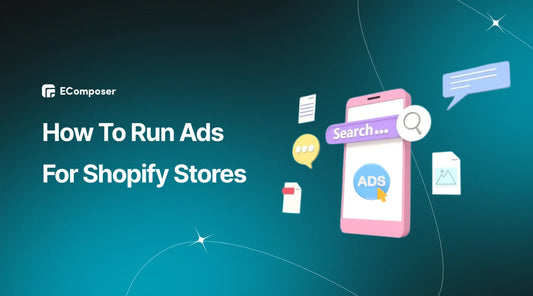

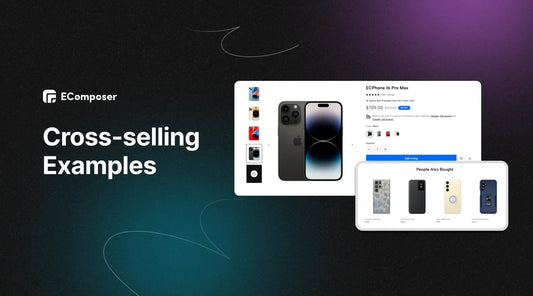
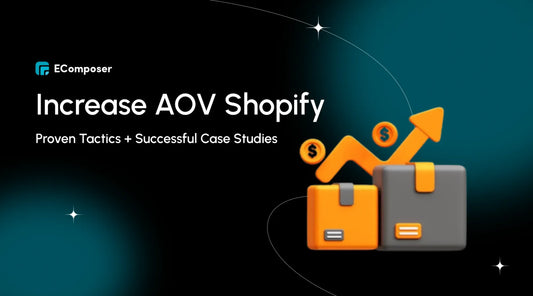
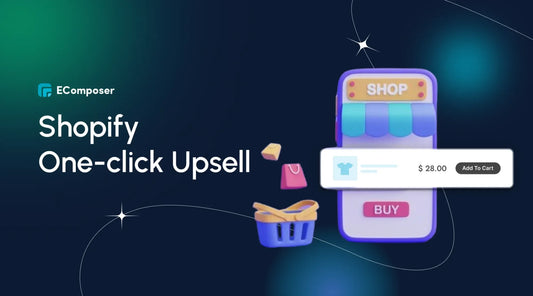







0 comments